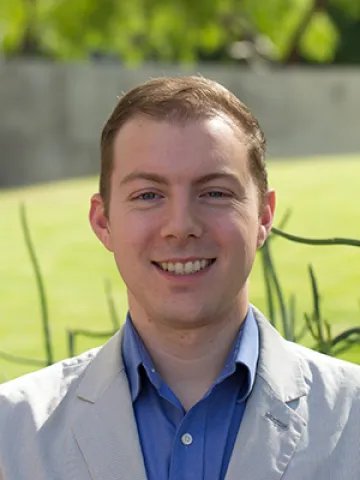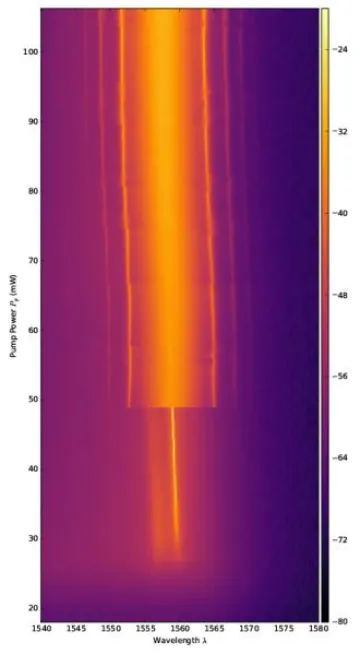Another Wavelength: Dawson Baker

This month in Another Wavelength, we chat with fourth year Ph.D. candidate, Dawson Baker.
Where are you from?
I’m from Ithaca, New York.
What brought you to study optics?

I think waves, nonlinearity, and time are some of the most beautiful and interesting things to think about. Much of optics (and laser research in particular) makes grappling with these concepts not only exciting in the abstract, but practical and necessary on a daily basis. When I was in high school, I made a lot of electronic music. Naturally, when working with music, there are a lot of tones and frequencies to deal with. I was already primed going into undergraduate studies to think in terms of waves. There were a few experiments I did in undergraduate physics at UT Austin that made me attracted to the photon in particular. I remember being astonished by the relative precision of x-ray and dual-comb spectroscopy. The scales that electromagnetic radiation encompasses are truly vast and awe-inspiring, ranging from the age of the universe down to the atomic timescales some 30 or so orders of magnitude faster. And when it really comes down to it, the electrodynamic and quantum perspective that one needs to describe the photon accounts for the majority of observable physics (albeit often indirectly). Combine the allure of optical science being both ubiquitous and interesting with the broad range of technologies our knowledge of light enables us to create and suddenly there’s a really good case to be made for ignoring nearly everything else and focusing on the photon.
Who is your hero in science?
Enrico Fermi is a favorite of mine, because he provides us with evidence that it is possible to be both theoretically and experimentally capable. He also gave us a great example of how to have fun living a quantitative lifestyle.
Describe your research in 20 words or fewer.
I’m trying to figure out how some ultrafast pulsed lasers get from off to on, and why they sometimes don’t.

Describe your research in 200 words or fewer.
My main project has been investigating how mode-locking and self-starting occur in sensitive bidirectional ultrafast fiber laser systems. In short, these lasers are ring configurations can pulse twice in either (clockwise or counterclockwise) direction or once in both directions. How these lasers start up is not well understood. When they do start, these lasers are capable of very sensitive spectroscopy in a compact and robust platform because the laser noise is reduced and can often be cancelled using the fact that both pulses originate in the same cavity. However, the models that are used for thinking about these lasers need to be developed. My goal in understanding these lasers is to find ways of robustly self-starting bidirectional operation and exploring the design constraints to further remove noise, enhance long-term stability, and increase peak power. Applications include fast THz spectroscopy, and new laser sources for multiphoton microscopy and gas sensing. This summer, for instance, I will be building a four-color compact pump-probe ultrafast laser system to replace a system that formerly took up the majority of a 4’ x 10’ table.
Name three neat facts about you.
- I generally like using nanoseconds over both feet and meters as a measure of distance. The nanosecond is an imperial feel (it’s basically a foot long), but it lives in a metric (SI) universe.
- As a past President of the Student Optics Chapter (SOCk) I’ve set up a variety of programs to support the OSC community and students academically, including occasional lectures on python programming.
- A side hobby of mine is tech transfer and the economics of intellectual property. My other undergraduate degree was in economics, and so to keep those skills alive I’ve worked for and volunteered for Tech Launch Arizona doing prior art and market analysis.
Research Caption:
An example of mode-locking as a function of pump power in an Erbium ultrafast fiber laser mode-locked by carbon nanotube saturable absorber. Side bands show dispersive waves getting amplified along with the central pulse and discrete changes in the side band position delineate multi-pulsing regimes.
